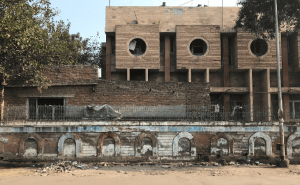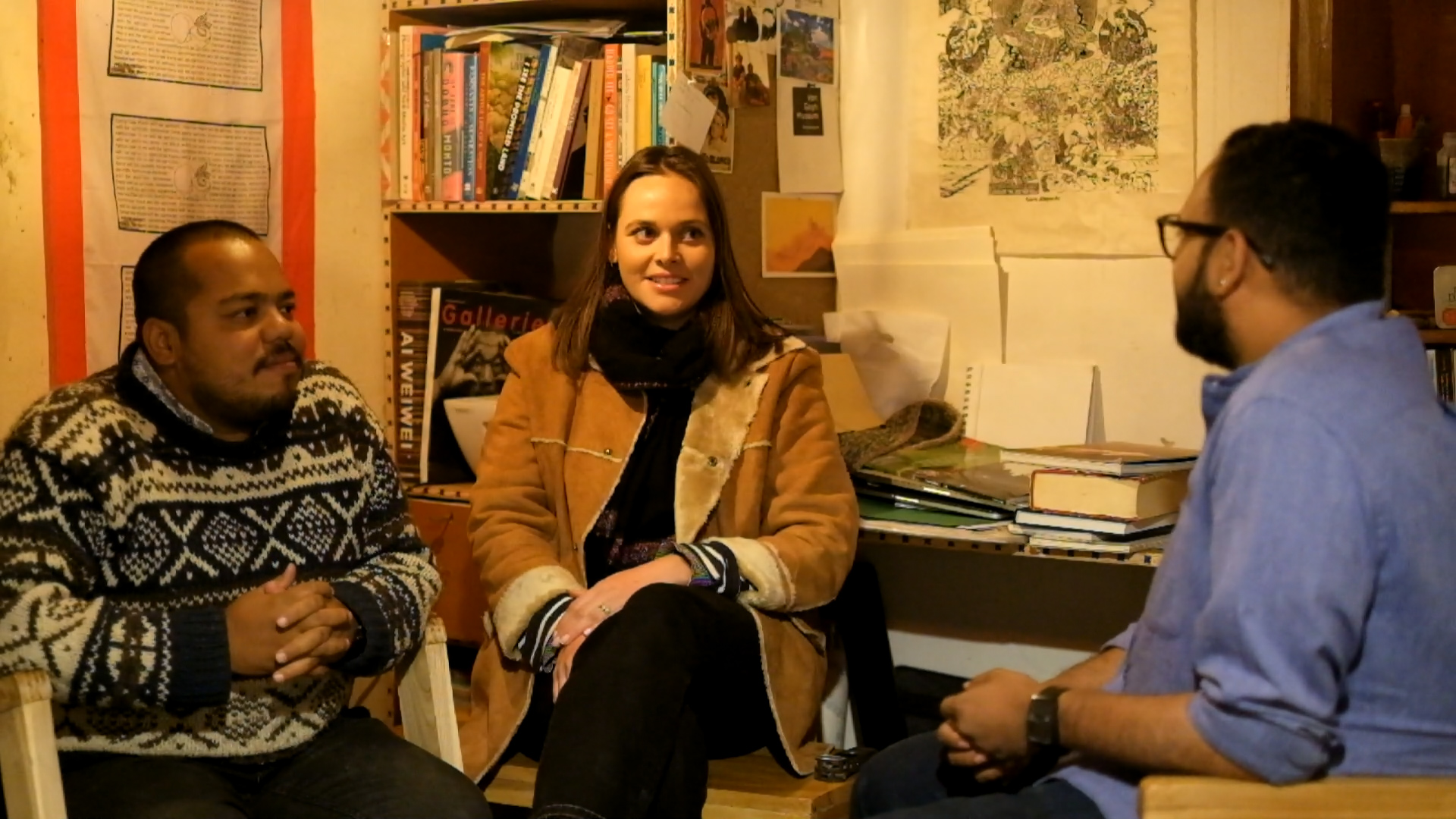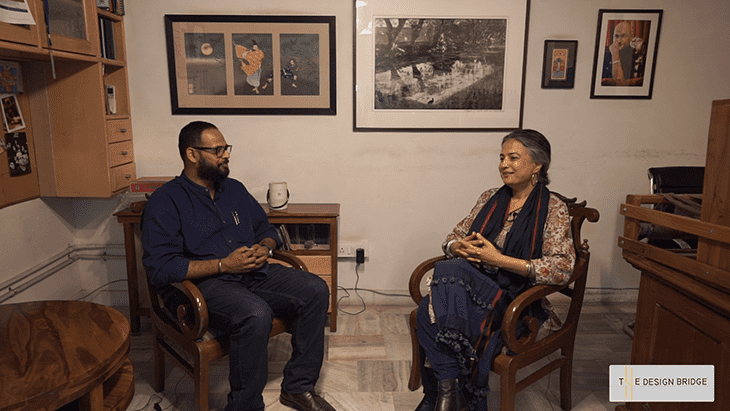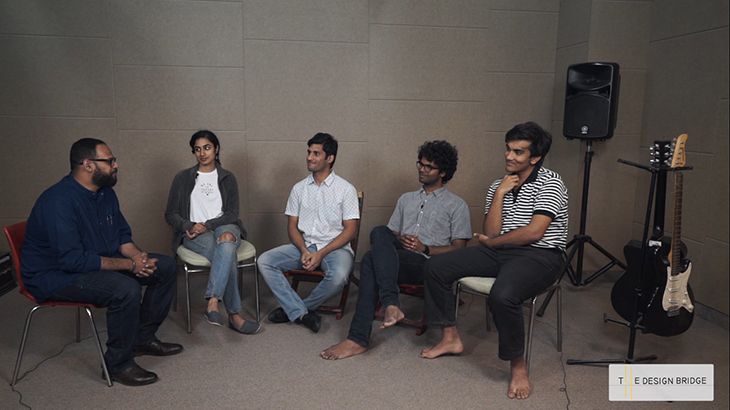ISSUE 1 | STAND POINT

The Ferrari and the elephant
PROFILE
- Debasish Borah is born in a sleepy town of easternmost end of India very close to the Burmese/Chinese border in a town called Miao, which explains his love for cats.
- He lives in north India in Leh, a town which is 4000m high. His works are drawn from politics, culture, social patterns and challenges.
- He works with photographs, video and installation-based works. He and his partner Helene Thebault founded an artist-run space called Farside Collective from Leh.
The Ferrari & the elephant
- Couple of years ago, while walking down MI road in Jaipur, I saw a multi-city Chinese food joint running from a heritage Mughal period char-baug styled building, most probably over two centuries old. Recently while visiting Sibsagar in Upper Assam, I run across colonial era heritage building housing a mobile store. That is the paradox we are living in, while the urban infrastructure is old, post liberalization India is looking towards future. This juxtaposition of two different worlds have given birth to a strange urban landscape, based on principles of ‘Indian ethos’ which in turn are highly inspired by mythology, religion and society. This is as close to parking a Ferrari in an elephant stable!
- The collective memory of a place or a region is made by the best examples of art or design, which can be modeled as ‘traditional’. Most likely, this model of ‘traditional’ which is based on the best of the civilization, which most likely would be the epitome of that era. So, when civilizations changes, the collective memories of citizens defining ‘traditional’ also changes, which crudes the ‘collective memory’. Or let’s say, ‘collective memory’ is deceptive. While collective memory is deceptive, how can be ‘traditional’ defined, on which modern day designers base their work on?
- The small towns of India are paying the biggest price in this post-liberalized India, where bad design is sold as the aspirations of advanced western world. It is not uncommon for us to see Punjabi baroque or Bengali Greek modeled architecture in our cities. In this case, Punjabi & Bengali are the Indian ethos and Baroque & Greek are dreams of the developed 1st world. While the world order has shifted across the Pacific to America, European model of development is shredded to adopt metal & glass, what I would call as the materials of capitalism.
- So, why we are still not able to find a balance of the Indian elephant and the Singaporean Tiger? Why are Indian designers trapped in this never-ending whirlpool of heritage & modernity? It is tough to answer these questions, maybe because we are yet to get out of our colonial legacy, maybe we are still not a mature nation and I don’t see any efforts in the policy making to become a mature nation. Our art & design has to come out of his postcolonial hangover, we cannot create Google centers with capitalist materials next to a monolithic statue of Lord Ram. Until this happens, we as designers will be confused and desperate about our identity.
- The idea of art & design comes from society and politics; architecture is not alien and it will respond to the socio-cultural dynamics around it. While us as designers can make efforts to find a balance, as discussed above, real change can start from the top-down model. Our policy makers have to adapt to the world of today, they have to speak of today and the future, what kind of a world we would like to live. Unless we see a paradigm shift in policy level interventions, real change is difficult. Only stating example of architecture and Urban facades, how public policy changed the primary shopping street of Lucknow, maybe only in terms of graphic design & identity is commendable. This is a small example, which can lead to way to larger interventions, in art, design and urban planning.
- After graduating from the University, I didn’t choose to work in a company or a design firm, because I thought I can change the world. This ‘changing the world’ narrative is an outcome of my middle class upbringing which regard the working-classes as ‘heroes’- A hangover of the Soviet era in middle class India. So, I choose to go to a small corner of the country, 4000m above sea level to build local dry-pit toilets. I never knew that time, that I would be still working in Ladakh and shifting my area of work from architecture to contemporary arts.
- Me and my partner founded NGO and got commission to build a 100% natural building in yet another inaccessible village in Zanskar. These experiences made me think about looking at the past, not only in terms of natural building, but living in a high mountain, with bare minimum needs and necessities. Amidst all this, I was broke- you see that’s what socialism do to you. Being broke taught me that this is not my responsibility to change the world; I can give my best within my limits and possibilities leading me to search for a true balance between my socialist principles and worldly desires. In other words, a search to find the middle ground of the past & the future.

Confluence of old and new
Pic courtesy - Debashish Borah
- My work has moved from architecture & design towards contemporary arts, film and image making processes, primarily because these tools are easier for me to express myself. Maybe also, because I feel design as a discipline is far away from reality, architecture mostly is a rich man’s need. I agree everyone needs good architecture, but look around our cities, we are surrounded by shabby, half baked, disappointing architecture. Architecture we appreciate is an endangered species- that is the state of the profession. While arts are no less shallow, I get room and space to be honest in my expressions, without intervention by our system.
- Noida is one of the newest cities in India, which is already old. The picture is from Noida, where the building has ‘circular’ postmodern windows, but with stone façades. An interesting example of new & old coming together. The meeting or the junction of this meeting is not defined, but an isolated attempt by an architect to bring them close, with ease or forcefully, one is open to interpret.






